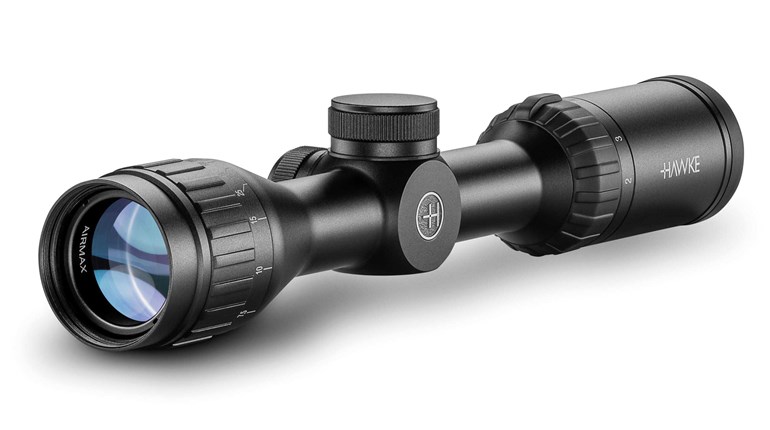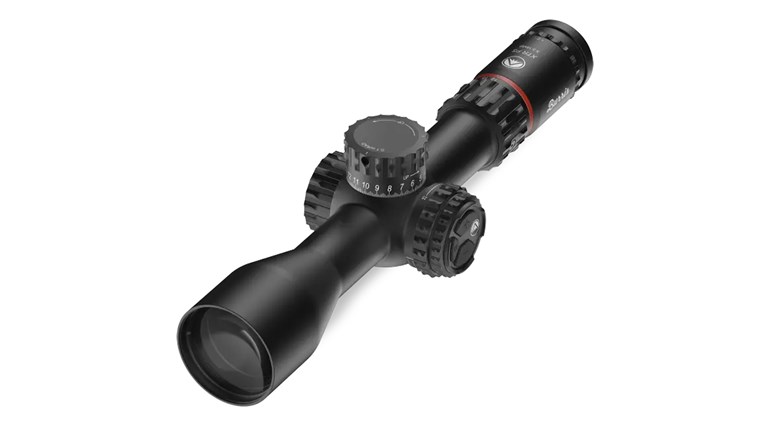
Since the dawn of the rifle, shooters have been on a quest to improve accuracy at distance. Optical sights obviously help with this, and their evolution continues. One facet of accuracy at distance that remains a challenge is range estimation. Laser rangefinders have made this task easier, but in real-world tactical applications, the time needed to properly employ them sometimes doesn’t exist. Meopta’s new MilDot2 reticle in its ZD 6-24X56 mm RD riflescope offers a practical solution.
In the absence of a rangefinder, reticle subtensions are what shooters use to estimate range and with practice, precision can be attained. However, it requires math, and in the stress of a defensive scenario or competition, this can be a difficult task. Meopta’s MilDot2 reticle simplifies this process, at least when your target is roughly man-size. The MilDot2 reticle provides three references that subtend to the human form, instantly allowing accurate range estimation.
The first reference relates to height. Granted, not all terrorists or enemy soldiers are the same height, but 5 feet, 11 inches is a good starting point. The second reference corresponds to the height of a kneeling man, and this point subtends to 3 feet, 3 inches. The final range-estimation feature is a 9.84-inch diameter circle sized to match a head. Used individually or collectively, accurate range estimation is possible.

Practically, the subtensions work well to allow for first-round hits between 300 and 1,000 meters. If you’re dealing with a target that’s slightly smaller or larger than Meopta’s average man, the reticle will give you a false reading, but only by a small margin. For instance, a man 5 feet, 9 inches tall fitting within the 800-meter bracket would actually be about 823 meters distant. In other words, for smaller targets you will shoot a bit low and for larger targets a bit high if you base your hold on what the reticle tells you.
If this fast and simplistic approach is not for you the center portion of the reticle is of the common Mil-Dot variety that can be used for ranging and trajectory compensation. It combines a fine center section made up of .2-mil circles, spaced 1 mil apart, with hash marks at every .5 mil. For use in poor lighting conditions, the complete 10-mil center section is illuminated, and the scope also has day and night brightness settings, fostering welcome versatility in varying light conditions.

The catch—there’s always a catch with optics—is the scope uses a second-focal-plane reticle. This means subtensions are only correct at one magnification. For this scope/reticle combination, Meopta chose 12X. If the power selector is set to any other magnification, your reticle-based range estimations or ballistic corrections will not be accurate. The 12X indication on the magnification adjustment has a dot to remind you of this, and the power indicator is on the left side of the ocular housing, as opposed to the top.
Illumination control is situated on the top of the ocular housing. Power comes from a single CR2354, 3-volt battery housed under a waterproof cap. On the left side of the illumination housing are two rubber-capped buttons. The front button activates the night mode, the rear the day mode. Brightness is adjusted intuitively by continually depressing the day button (+) for more or the night button (-) for less. In the night mode, the reticle is almost invisible without the aid of a night-vision device.
All this reticle coolness is pointless if the optic isn’t capable of delivering a crisp and bright image, along with precise and repeatable adjustments. Admittedly, crispness and clarity are hard to evaluate unless one compares multiple optics. My eyes were convinced the view through the Meopta ZD 6-24x56 mm RD is, edge to edge, as good as it gets. It was everything you’d expect from a $2,000 optic. A large parallax-adjustment wheel and quick-focus eyepiece contribute to the optic/eye interface. As for brightness, remember that scopes don’t actually transmit light, they diminish it. In other words, the view you see through a scope will not be as bright as when not looking through it. Meopta claims only a .3-percent reduction in brightness per lens surface. Obviously, I’m without the optical instruments to confirm this, but I can tell you the scope performed very well in low light, with no discernible reflection or glare. Meopta’s excellent lens-surface treatments surely contributed to the pristine view, and they’re coated to military scratch- and abrasion-resistance standards.
As for brightness, remember that scopes don’t actually transmit light, they diminish it. In other words, the view you see through a scope will not be as bright as when not looking through it. Meopta claims only a .3-percent reduction in brightness per lens surface. Obviously, I’m without the optical instruments to confirm this, but I can tell you the scope performed very well in low light, with no discernible reflection or glare. Meopta’s excellent lens-surface treatments surely contributed to the pristine view, and they’re coated to military scratch- and abrasion-resistance standards.
Overall, this is an excellent, well-appointed tactical riflescope, with an easy-to-employ, common sense, range-finding reticle. Meopta has built quality optics for a long time, but it’s often overlooked in the U.S. That’s a serious mistake because if Meopta riflescopes are not as reliable and as optically brilliant as the better-known high-end brands, they’re better.




































